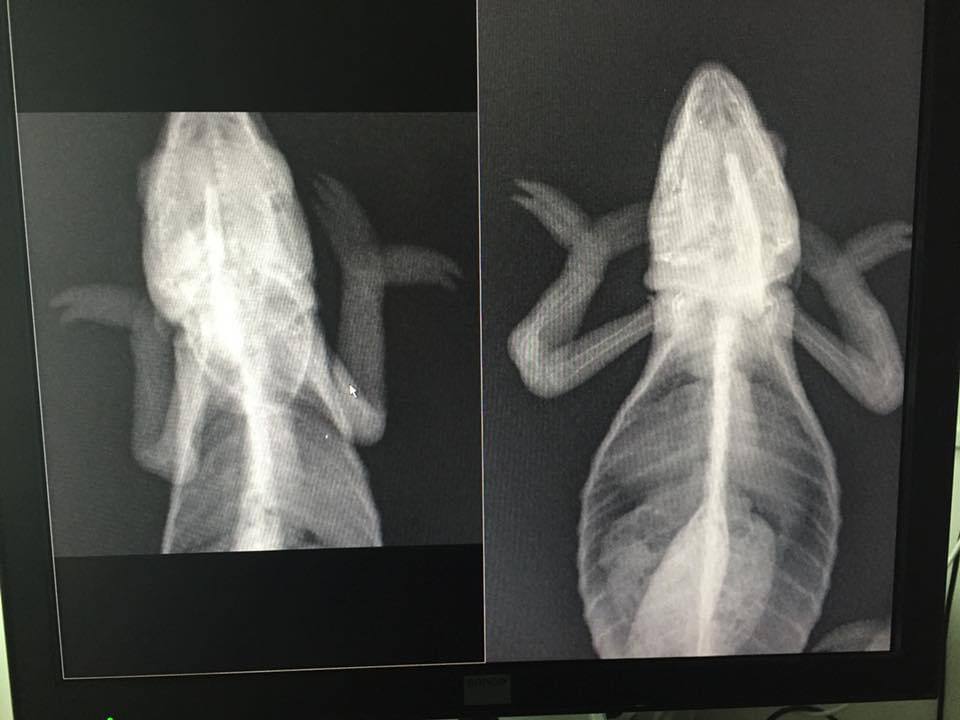- Published on
MBD - A Case Study
A few years ago I was contacted by a local reptile vet and asked if I was able to help a client who had purchased a juvenile yemen chameleon from a local reptile shop. Sadly, they had not been given the correct advice with regard to feeding and nutrition and the importance of calcium for chameleons in particular. The shop itself had the incorrect set-up and the UVB was incorrectly positioned meaning that adequate UVB was inaccessible. I was asked if I could assess the client's set-up and improve/correct it so as to help the little guy before it was too late as if left much longer, he would die. The set-up recommended and sold to them by the shop also had inadequate UVB and no night-time heat.
When I first saw 'Huchuy' the chameleon, his grip was weak, he couldn't feed himself and he crawled along on his front legs, trembling. The x-ray that the vet sent to me (left hand pic) showed he had almost no visible skeleton in his limbs, you can also see his head shape is less defined.
Luckily the owner was very keen to take my advice and was prepared to do everything necessary to help. They actually became great friends and their chameleon lived to a very respectable old age in chameleon terms (5+ years).
I took over his care, provided good UVB with an Arcadia D3+ lamp unit and corrected issues with the set-up. Four times a day I assist fed him repashy grub pie, rubbed ground cuttlefish between his lips and syringe-fed him water. A week later he began feeding himself. I swapped his diet to calcium-rich live food: butterworms, gut-loaded dubia roaches and silkworms and he then drank from a thin stream of tap water by himself. I was really happy with his improvement. The x-ray on the right was taken just 3 weeks later after my intervention. In the pic on the right you can finally see faint bones in the limbs and the jaw bone is a much better shape! Even the reptile vet was astonished that results could be seen on x-ray so quickly. The client upgarded their enclosure adding night-time heating and much better UVB. He improved even more over time and lived to a ripe old age in a happy loving home.

My personal opinion from extensive experience with breeding various species of chameleons is that the best advice I can give chameleon owners is:
Gutload ALL feeder insects
Only feed good quality insects such as Cockroaches, calciworms, silkworms and butterworms (if available) These are the most nutritous and provide the higest levels of protein/calcium
Dust liberally at EVERY feed with a calcium supplement powder
Some people are of the opinion that over dusting can lead to dangerous levels of D3/calcium building up in the body. However, where this may be the case for certain species of lizards, I have NEVER heard or seen of a case in a chameleon and almost 95% of the chameleons I encountered whilst working in the reptile trade were actually vitamin deficient. Their metabolism and vitamin requirements are so high that it would be almost impossible for this to happen. As most owners do not dust adequately anyway, anything that might decrease this is more likely to have a detrimental affect on their chameleons health.
Huchuy after! This just shows how you can make a difference in just 3 weeks to the health & strength of your chameleon bones and calcium intake.
